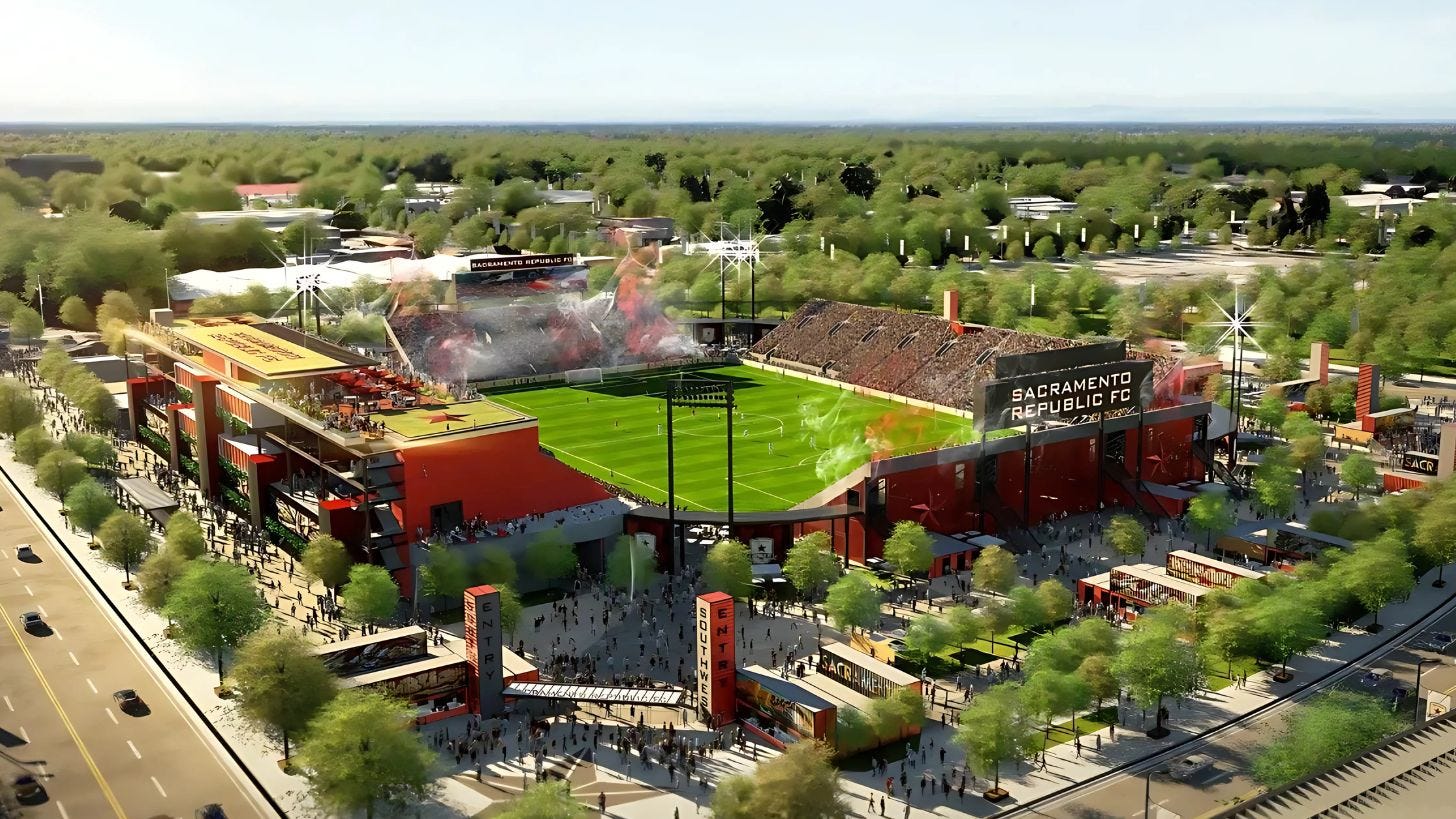Unanimous City Council Vote Clears Way for Railyards Stadium
After years of anticipation, Sacramento Republic FC’s stadium project has taken a monumental leap forward. In a unanimous vote Tuesday night, the Sacramento City Council approved a financing plan that paves the way for construction to begin this summer on a 12,000-seat soccer-specific stadium in the historic Railyards district.
The decision marks a defining moment not only for Republic FC, but for one of the most ambitious urban infill redevelopments in the country. Once the western terminus of the transcontinental railroad, the 237-acre Railyards site has sat largely dormant since 1994. That’s about to change in a big way.
A Stadium Anchoring a Citywide Vision
The stadium—slated to open in 2027 in time for the USL season—will be built along 7th Street on the east side of the Railyards. It’s just one part of a $220 million mixed-use project that includes housing, retail, a hotel, live music venues, a public market, and a growing medical campus.
While the stadium itself will be privately financed by Wilton Rancheria through the Indomitable development group, the Council’s vote authorizes the creation of an Enhanced Infrastructure Financing District (EIFD). This district allows the city to reimburse developers for critical public infrastructure—roads, parks, sidewalks, and utilities—using future tax revenue generated by the site, without tapping into Sacramento’s general fund or raising new taxes.
As Mayor Kevin McCarty put it:
“Our budget situation has zero impact on building the stadium. It’s the flip side — this stadium being built is going to bring more money into the city of Sacramento and help us address our budget priorities citywide.”
The city will also acquire two nearby parcels for $14 million using proceeds from a 2015 sale of the Sheraton Grand Hotel.
A Massive Economic Engine
According to a new economic impact analysis prepared by Stantec and EPS, the Railyards redevelopment will deliver:
$8.2 billion in one-time construction impact
$4.4 billion in annual economic output
Nearly 24,000 new jobs countywide, with over 13,500 on-site in construction, healthcare, hospitality, and retail
$3.09 billion in construction-related wages
Over $2.1 billion in ongoing annual wages
The broader Railyards vision includes up to 10,000 housing units, with as many as 600 designated as affordable. Already, the AJ affordable housing complex and the Wong Center have been completed, and a new Kaiser Permanente hospital is under construction.
Denton Kelley, CEO of Downtown Railyard Venture, described the project as the future core of Sacramento:
“The Railyards will offer the kind of amenities and experiences that define world-class cities… These destinations are where our community will gather for experiences that are uniquely Sacramento.”
Not Without Criticism
Despite the vote’s unanimous result, the financing plan has drawn criticism from housing advocates and labor groups, some of whom argue it prioritizes private development over public interest.
Tamie Dramer of Organize Sacramento called for more time and transparency:
“The conversation needs to be extended, and the community needs to be educated before the City Council goes ahead and considers taking on more debt.”
Critics have claimed the plan will direct $92 million in public funds toward subsidizing developers. But project backers counter that the EIFD model only reimburses developers if and when new taxable value is created.
Barry Broome, president of the Greater Sacramento Economic Council, emphasized that:
“The city has no financial risks here… Developers are putting in the public improvements, and they only get reimbursed if they generate the tax revenue to justify it.”
A New Era in Motion
With the final vote now secured and the economic roadmap in place, Sacramento is poised to begin a once-in-a-generation transformation of its downtown core. Construction on Republic FC’s stadium and surrounding infrastructure is expected to begin later this year.
For a city that’s long sought a unifying anchor for its growth, and for a club that’s built a loyal following on grit and ambition, the future begins now—on the Railyards’ long-empty canvas.



